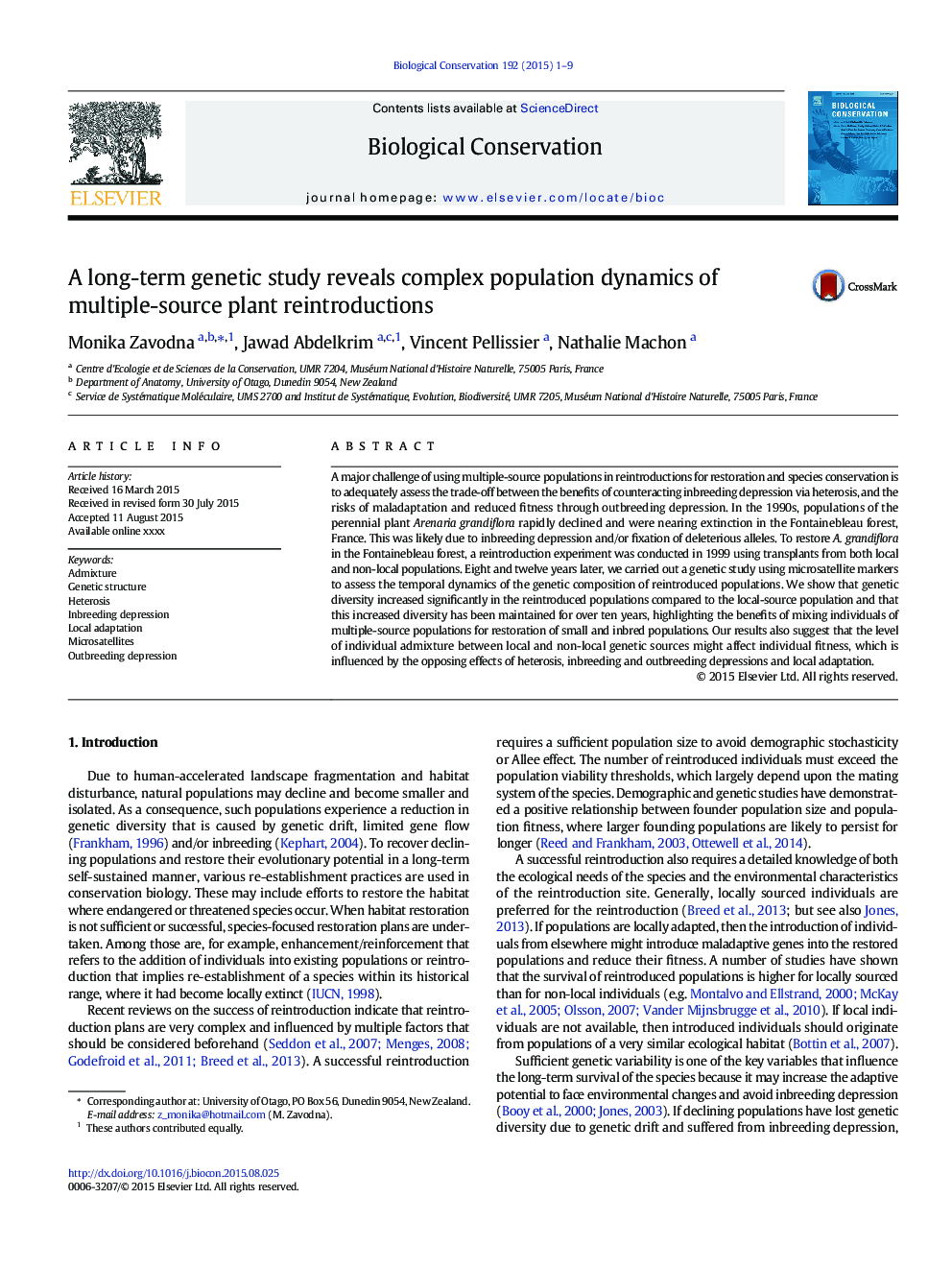| Article ID | Journal | Published Year | Pages | File Type |
|---|---|---|---|---|
| 6298533 | Biological Conservation | 2015 | 9 Pages |
Abstract
A major challenge of using multiple-source populations in reintroductions for restoration and species conservation is to adequately assess the trade-off between the benefits of counteracting inbreeding depression via heterosis, and the risks of maladaptation and reduced fitness through outbreeding depression. In the 1990s, populations of the perennial plant Arenaria grandiflora rapidly declined and were nearing extinction in the Fontainebleau forest, France. This was likely due to inbreeding depression and/or fixation of deleterious alleles. To restore A. grandiflora in the Fontainebleau forest, a reintroduction experiment was conducted in 1999 using transplants from both local and non-local populations. Eight and twelve years later, we carried out a genetic study using microsatellite markers to assess the temporal dynamics of the genetic composition of reintroduced populations. We show that genetic diversity increased significantly in the reintroduced populations compared to the local-source population and that this increased diversity has been maintained for over ten years, highlighting the benefits of mixing individuals of multiple-source populations for restoration of small and inbred populations. Our results also suggest that the level of individual admixture between local and non-local genetic sources might affect individual fitness, which is influenced by the opposing effects of heterosis, inbreeding and outbreeding depressions and local adaptation.
Keywords
Related Topics
Life Sciences
Agricultural and Biological Sciences
Ecology, Evolution, Behavior and Systematics
Authors
Monika Zavodna, Jawad Abdelkrim, Vincent Pellissier, Nathalie Machon,
